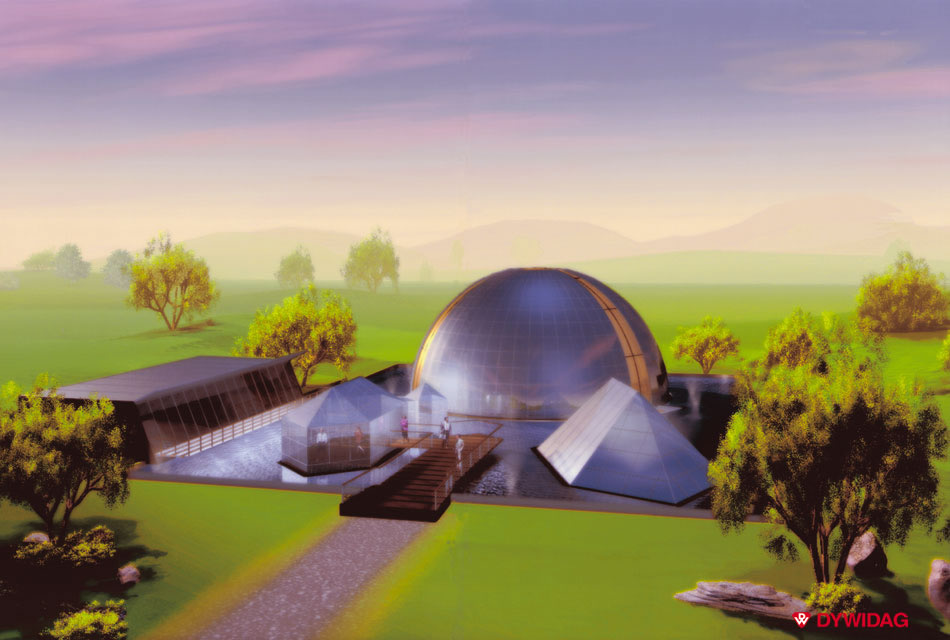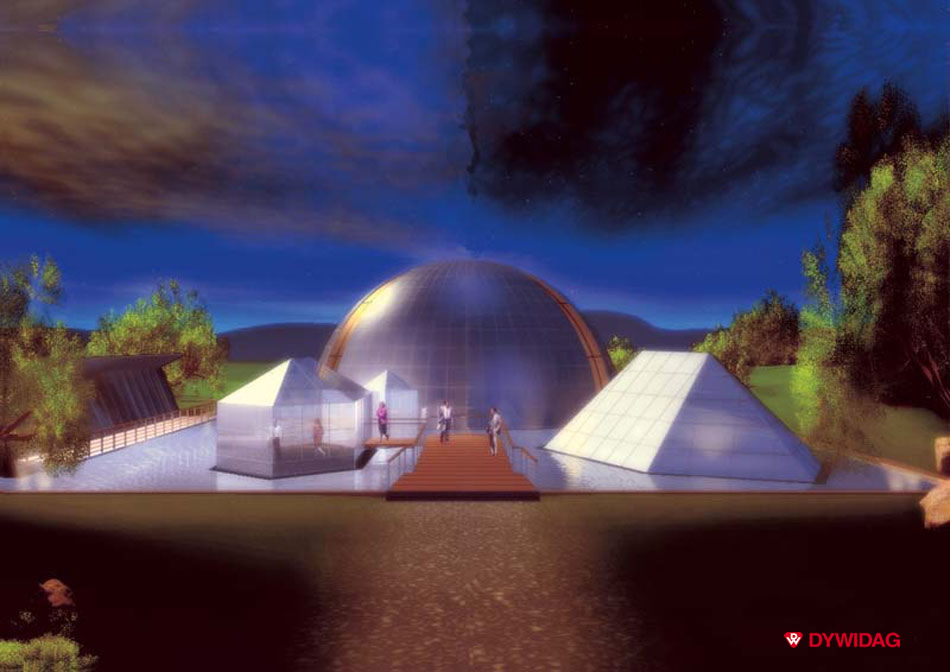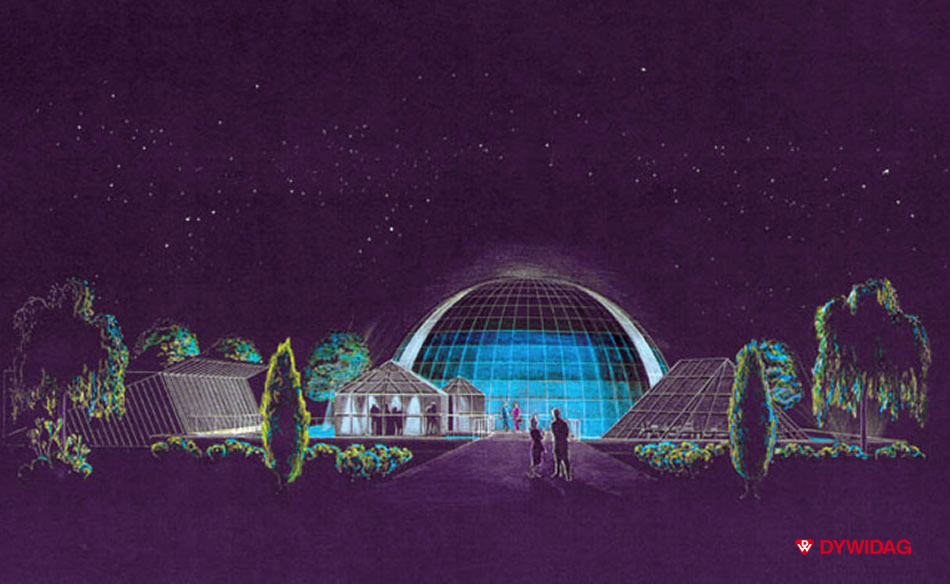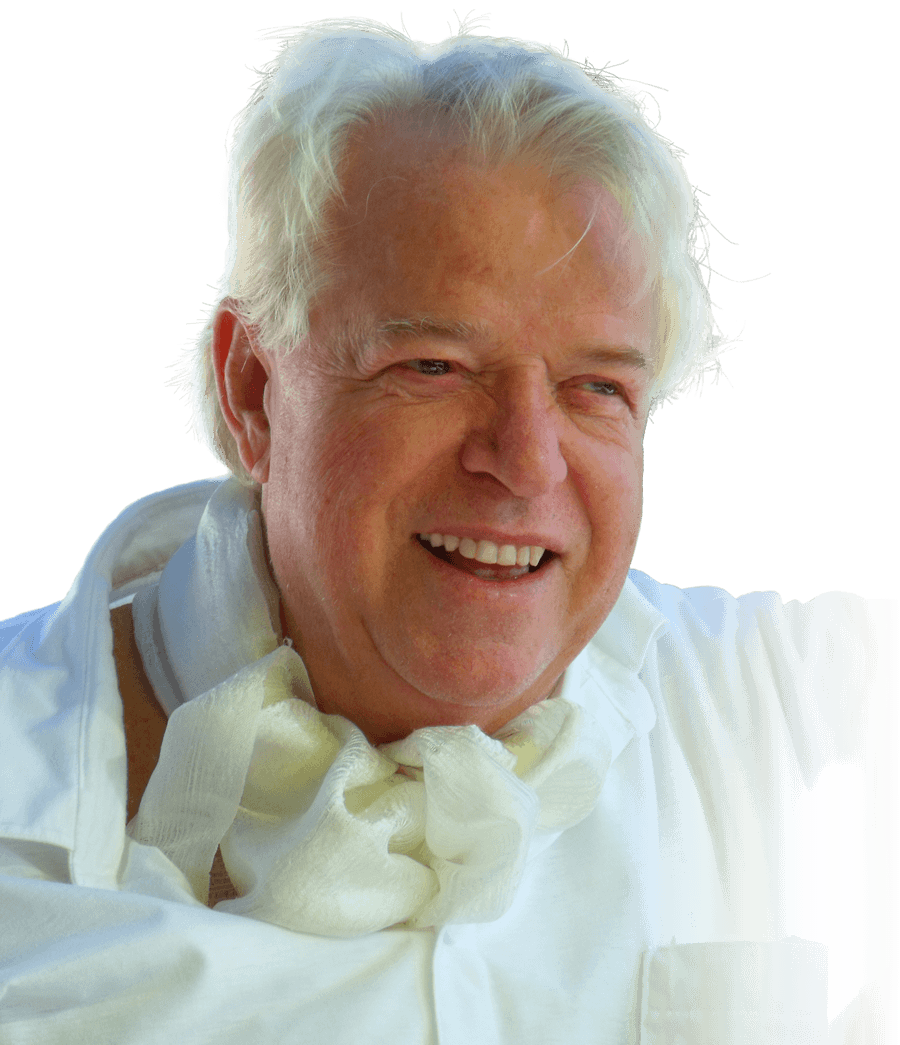
PETER HÜBNER
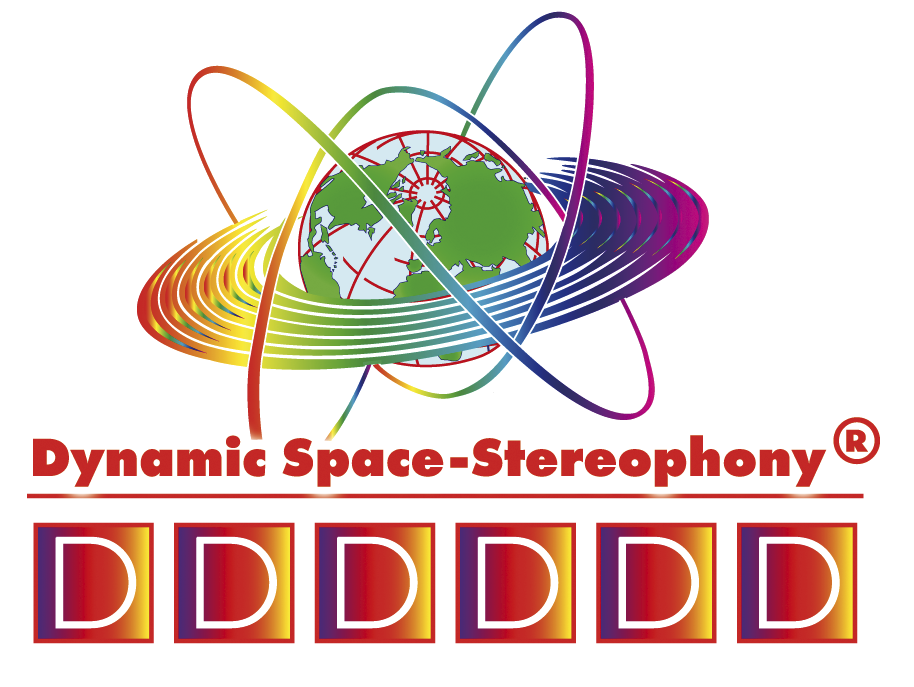
Inventor of DYNAMIC SPACE STEREOPHONY®

PETER HÜBNER

Inventor of DYNAMIC SPACE STEREOPHONY®
For about 50 years, the classical composer and musicologist Peter Hübner has been focusing in his Micro Music Laboratories® on the scientific investigation and utilization of the harmony laws of the microcosm of music.
Musicological Research
in the Microcosm of Music
for DYNAMIC SPACE STEREOPHONY®
Dynamic Space Stereophony® is a further development of conventional stereophony, whereby musical logic becomes the focus of the musical experience by means of a completely new musical recording technique, musical processing technique, as well as musical reproduction technique.
Whilst with the help of conventional stereophony the location of the musicians and/or singers is represented on the stereo line, Dynamic Space Stereophony® is about structuring the acoustic space with scientific methodology, by making use of the musical logic of a piece of music – i.e. portraying the supporting elements of a piece of music in such a dynamic way in an acoustic space that the listener is able to immediately register the structural developments of its composition in the acoustic space.
This has immense benefits for musical cognition, especially in the field of classical music: and that is because our hearing actively supports our mental capacity to differentiate.
The interesting thing about music for the music-lover, and in particular the educated listener of classical music, is not hearing the tones or sounds, but it is that what makes the tones turn into melody – i.e. what connects them – and in an extreme case to the cosmology of polyphony.
The great art of the fugue – actually, the greatest art in music – mainly remains obscure to many listeners, because conventional stereophony, by its very layout, fails to portray the integrated musical logic, which creates the art of the fugue, as such and make it recognisable in an acoustic space.
The reason for this is that conventional stereophony was developed by technicians and not by creators of music from the field of classical music.
What experts of conventional stereophony portray on an imaginary line in an acoustic space – the orchestra’s seating arrangement – was regarded as unimportant for music by the great composers, that is why they never noted this down in their scores or provided any information on it.
Approx. 40 years ago, Peter Hübner set himself the task as a classical composer and musicologist to solve this issue to portray musical logic in an acoustic space in dynamic development, thus demonstrating to the listener what music beyond any tones really is. And so, with the assistance of engineers and technicians, as well as computer experts, he has dedicated himself to this task for the last four decades to perform that, which especially conventional stereophony has not paid any attention to so far, and that is the music – in contrast to the tones and sounds and the orchestra’s seating arrangement – direct in the acoustic space, and to make it easily recognisable to the listener there.
This opens up a completely different musical experience to the listener, and in particular to the educated music-lover of classical music, a much deeper insight into the structuring of an exalted style of music and into the logic of the musical work of our great classical composers.
In recognition of this task Peter Hübner has set himself, great conductors and orchestras from around the world have shown interest in new recordings of classical musical literature with their orchestras for the past 20 years and have thrown their weight behind this idea, which performs music in an acoustic space in such a way as the classical composers experienced it in their minds with their inner sense of hearing in a natural way in dynamic development, when writing it down.
All great composers have reported on this astonishing experience of dynamic musical development in their consciousness.
But it required state-of-the-art technology of our electronic and especially our digital age, in order to make this authentic experience of the dynamic development of music in space and time audible in an acoustic space in such a way that the listener gets the right impression of the musical evolutionary process that the composer himself experienced in his inner being during the dynamic creation of this music.
The basic idea of the creation of Dynamic Space Stereophony® was to bring closer to the listeners that which the great classical composers understand to be music, and to make it clear to them from their very own experience and knowledge why they created music in the first place.
This inner spiritual experience has an immense educational value, and is at the same time also incomparably more impressive than the present presentation of music in conventional stereophony.
When from a purely outward point of view conventional stereophony in comparison corresponds to the picture on a screen or in the most favourable case the film, then Dynamic Space Stereophony® corresponds to the holographic presentation of a dynamic structural development in space and time.
With Dynamic Space Stereophony® the additional acoustic medium for the holographic “film” of the future has been created.
But for the music-lover Dynamic Space Stereophony® is in its core the spatiotemporal dynamic presentation of the inner musical experience of the great classical composers in acoustic space.
Astronomical Background
of DYNAMIC SPACE STEREOPHONY®
The famous mathematician, musicologist and astronomer Johannes Kepler has scientifically verified that the orbits of the stars and planets conform to the same cosmic laws of harmony as the inner sound paths and/or sound developments in the microcosm of music.
Indeed, Kepler even calculated the planetary orbits originally on the basis of his music theoretical findings.
Medical Background
of DYNAMIC SPACE STEREOPHONY®
In a work revolutionizing scientific medicine “Biological Rhythms in Humans and their Counterparts in Music,” Prof. Dr. med. Gunther Hildebrandt, one of the greatest thinkers of our time and one of the fathers of chrono-medicine verified how the rhythmic processes in the healthy human organism follow the cosmic laws of harmony and literally let it become a music physiology.
“This consideration is age-old”, says Peter Hübner, “because it corresponds to the inner reality of competent music creation and inner music listening.”
Already Pythagoras, as reported by Jamblichos, has tried to realize something like this in his school - far away from the highly developed technologies of our digital age.
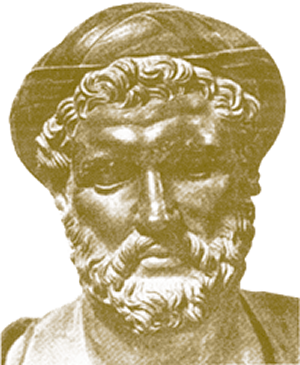
Jamblichos
Dynamic Space Stereophony® promotes a true scientific, objectifiable dynamic spatial-temporal musical experience – it even seems that through an integrated dynamic of space and time, it creates for the first time an inner access to music and to an authentic space-experience.
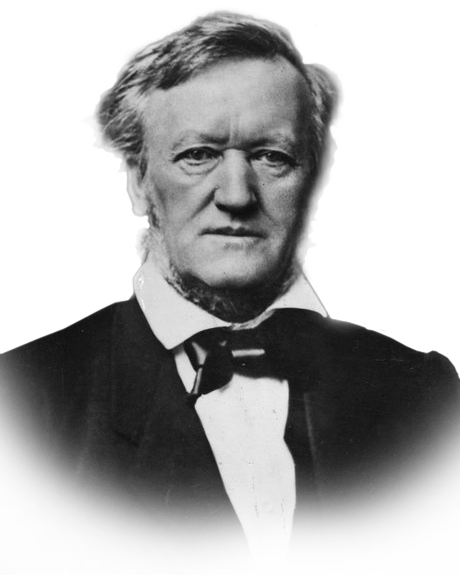
“Right at the beginning I would like to say that inspiration is a very evasive object that is not so easy to describe and about which we know very little. Few people know how to draw on this source, which is probably the reason why so little is known about it.
I am convinced that all-encompassing currents of divine thoughts exist, which vibrate everywhere in the ether, and that everyone who can perceive these vibrations is inspired, provided he is conscious of the process and possesses the knowledge and the skill to present them in a convincing manner, be he composer, architect, painter, sculptor or inventor.
During my work I have had many wonderful and exhilarating experiences in that invisible realm, which I can describe to some extent at least.
I believe first of all, that it is this universal vibrating energy that binds the soul of man to the Almighty Central Power from which emanates the life principle to which we all owe our existence. This energy links us to the Supreme Force of the universe, of which we are all a part. If it were not so, we could not bring ourselves into communication with it. The one who can do this is inspired.
I have very specific impressions in this trance-like state, which is the prerequisite for any truly creative effort. I feel that I am one with this vibrating force, that it is omniscient and that I can draw on it to an extent that is limited only by my own ability.
Why could Beethoven appropriate it to a higher degree than Dittersdorf, to name but one of the many smaller composers of that time? Because Beethoven was much more aware of his harmony with the divine than Dittersdorf. Beethoven said so himself. We have documentary proof of that.”
Richard Wagner
“I must despise a world
which has no idea
that music is a greater revelation
than all wisdom and philosophy.”
Beethoven
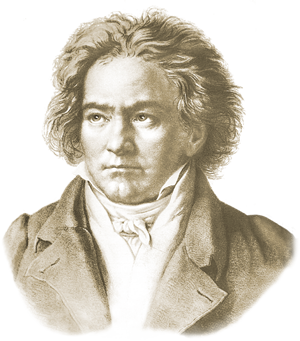
This is the archetypal, creative dimension of the classical composer.
And the objective scientific research results verify here outstanding and partly unbelievable positive medical effects – they even made the integrated dynamics of space and time under scientific application of the harmony laws of the microcosm of music a new branch of scientific medicine as well as of pharmacology.
Herbert von Karajan
showed “extreme interest” in Peter Hübner’s research and developments in the microcosm of music as well as in the Dynamic Space Stereophony®.
He refered to Peter Hübner’s work in a personal letter to his publisher as almost like “our common concern.”
Herbert von Karajan – respected by many as the best conductor of his time, for many years Music Director and Chief Conductor of the Berlin Philharmonic Orchestra and Director of the Salzburg Festival
Mstislav Rostropovich
Under the direction of Mstislav Rostropovich, the EXECUTIVE DIRECTOR of the NATIONAL SYMPHONY ORCHESTRA, STEVEN KLEIN, wrote to Peter Huebner’s publisher on the recording of classical works in DYNAMIC SPACE STEREOPHONY®:
“Our Music Director, Maestro Rostropovich, has been informed of this project and sends his warmest best wishes and asks me to continue discussion with you on his behalf.
The concept ... of Dynamic Space Stereophony could, in my estimate, be the first advance in recording to have occurred in many, many years.
I can truthfully say that the National Symphony Orchestra is very interested in further exploring the possibility of the National Symphony’s being involved in this historic project and being the pioneer orchestra in the United States.”
Mstislav Rostropovich – celebrated by many as the best cellist in the world, many years MUSIC DIRECTOR of the NATIONAL SYMPHONY ORCHESTRA in the USA
Hans Vonk
I hereby recommend to you
the creations of Mr. Huebner
with most urgency.
Hans Vonk – Music Director – Conductor – praised for his stylistic authority and mastery of orchestral color, Hans Vonk has garnered wide critical acclaim for his work with the leading American and European orchestras. A conductor of diversity and experience, Maestro Vonk commands a broad repertoire, ranging from the core masterworks to premieres by American and European composers. His extensive experience in opera and ballet make Hans Vonk a consummate conductor.
From 1980 till 1991 Chief Conductor, Residentie Orchestra of the Hague. From 1985 through the end of the 1990 Chief Conductor of the Dresden Staatskapelle, Europe’s oldest orchestra, following in a distinguished lineage which includes Heinrich Schütz, Richard Wagner, Karl Böhm, Rudolf Kempe, and Fritz Busch. Maestro Vonk was the first conductor since Böhm to head simultaneously both the celebrated Staatskapelle and the Dresden State Opera.
From 1990 till 1997 Chief Conductor of the Cologne Radio Symphony Orchestra (WDR). Since 1996 Music Director and Conductor of the Saint Louis Symphony Orchestra. Guest conducting: Royal Concertgebouw Orchestra, the Oslo Philharmonic, the London Symphony Orchestra, the London Philharmonic, the BBC Symphony Orchestra, L'Orchestre Philharmonique de Radio France, and the English Chamber Orchestra, as well as in Japan and Australia.
Zubin Mehta
writes about Peter Huebner’s project of recording classical works in DYNAMIC SPACE STEREOPHONY®:
“I hope that the Israel Philharmonic Orchestra will, in the future, be able to participate in the first attempts at recording the works of the Old Masters and therefore be contributive to the future of this unusual project.”
Zubin Mehta – music director of the Israel Philharmonic Orchestra, honorary conductor of the Vienna State Opera, Bavarian State Opera, Vienna Philharmonic Orchestra, Munich Philharmonic Orchestra, Los Angeles Philharmonic, New York Philharmonic, Teatro del Maggio Musicale Fiorentino, Staatskapelle Berlin and Orchestra Palau de les Arts Valencia
Jesus Lopez Cobos
wrote in a letter to the composer Peter Huebner:
“I have read with great interest your books, ‘Natural Music Creation’ and ‘Natural Music Hearing’.
I was extraordinarily impressed. I have never seen the whole process of composing so clearly introduced.
At the same time I am also very interested in your system of DYNAMIC SPACE STEREOPHONY ...”
Jesus Lopez Cobos – conductor, many years music director of the German Opera Berlin, the Spanish National Orchestra, the Cincinnati Symphony Orchestra, the Chamber Orchestra Lausanne and the Teatro Real in Madrid.
Stanley Sperber
in a letter to the composer Peter Huebner:
“It was great pleasure to meet with you and to have the opportunity to speak together as well as listen to excerpts from your symphonies.
The music intrigued me, especially your unique manner of combining orchestral and vocal forces into one organic entity.
As Music Director of the Haifa Symphony Orchestra as well as the National Choir of Israel – Rinat – I would like to express my interest in the possibility of performing and recording one of your three symphonies with the above mentioned orchestra and choir.
My heartiest congratulations on your formidable musical accomplishments.”
Stanley Sperber – internationally renowned conductor – for many years music director and chief conductor of the Haifa Symphony Orchestra, is now its conductor laureate. Mr. Sperber has toured extensively in Europe and North America and has been conducting orchestras in many parts of the world. Maestro Sperber was recognized with awards such as the Order of Merit from the Israeli Composers Association (1987) and the National Council for the Arts and Culture Prize (1992).
Vladimir Ashkenazy
In a public recommendation for Peter Huebner’s activity he writes:
“I fully support Peter Huebner’s scientific approach to explore the natural relationship between music and human health and behaviour: three decades of work which finally found its expression in his Medical Resonance Therapy Music®.
Music plays a very important role in our life – whether or not we are aware of it. And different types and structures of music can have a highly negative or beneficial effect – not only on the psyche of an individual but on a whole spectrum of a psychological and emotional climate of our society.
I hope that all those who want to contribute to a natural state of harmony – individually and socially – will focus on Peter Huebner’s scientific work and the achievements of his Medical Resonance Therapy Music® and become aware of their tremendous importance.”
Vladimir Ashkenazy – is one of the best pianists of our time, Principal Conductor and Artistic Adviser: Sydney Symphony Orchestra, Conductor Laureate: NHK Symphony Orchestra, Tokyo, Philharmonia Orchestra, London, Iceland Symphony Orchestra, Music Director: European Union Youth Orchestra.
Prof. Rubin Abdullin
in a letter to Peter Huebner:
“As you may know, we have integrated your very impressing composition ‘Sun Symphony’ into our educational program for our students: as an example of a convincing new direction in the field of composition, as a work of highest quality in the tradition of the great classical composers.”
Prof. Rubin Abdullin – rector of the Kazan Conservatoire, a People's Artist of Russia and of the Republic of Tatarstan, an Honoured Artist of Russia, a recipient of the State Prize of Russia, a jury member of many All-Russian and international competitions and Chairman of the Russian Union of Organists. He graduated from the Kazan State Conservatoire in piano (class of Professor E.A. Monaszon) and trained as an organist at the Leningrad State Conservatoire under Professor N.I. Oksetian. He completed further training as a teacher and performing organist during his postgraduate studies at the Moscow State Conservatoire under L.I. Roizman.
Noam Sheriff
publicly acknowledges the achievements of Peter Hübner:
“It is with the greatest pleasure that I recommend to you the creations of Mr. Peter Hübner in the various fields of music:
Mr. Peter Hübner is a brilliant mind and a great innovator in all fields of music and sound. His searching soul illuminates new aspects and opens new horizons in understanding and experiencing music.
He is a musician, philosopher, poet and innovator in one man. Every assistance which might be given to him will be rewarded in the future as his thinking in the field of sonics is unique.”
Noam Sheriff was for many years director of the Rubin Music Academy at the University of Tel Aviv, music professor at the Jerusalem Academy of Music and Dance, the Music University Cologne, Germany, and the Mozarteum in Salzburg, Austria. For many years he was also music director of the Israel Symphony Orchestra, the Israel Chamber Orchestra and the Haifa Symphony Orchestra.
Prof. Dr. Herbert Eimert
in a statement Prof. Dr. Herbert Eimert writes:
“Huebner has acquired all knowledge in the field of electronic music...
Peter Huebner ... has developed concepts which demonstrate a special talent for the musical and technical questions of electronic music...
Peter Huebner has developed a notation for electronic music, as well as a further notation which allows orchestral music to be connected directly with electronic music.”
Prof. Dr. Herbert Eimert – internationally renowned composer and probably the most significant music theorist of our time (his book: “The Fundamentals of Modern Series Technique”), publisher of the series “New Music”, founder of the first electronic music studio of the world at the WESTDEUTSCHE RUNDFUNK, Cologne, and therefore internationally acknowledged as the “father of electronic music,” professor for composition and electronic music at the State Academy of Music, Cologne, director of the electronic studio of the academy.
Prof. Dr. Zvi Rothenberg
gives his opinion of Peter Huebner’s music:
“This music is the answer to the decadence of our time.
This is true music, music from the source, compositions of the quality of Bach, Vivaldi and Corelli.”
Prof. Dr. Zvi Rothenberg – renowned violinist, music teacher, founder of the HAIFA SYMPHONY ORCHESTRA, for 28 years DIRECTOR of the HAIFA MUSIC CONSERVATORY, certainly one of the most important music therapists of Israel
Shalom Ronli-Riklis
writes a public recommendation to the publishing house Aar Edition:
“I had an opportunity to listen to some of Mr. Huebner’s compositions, like the Sun Symphony and the Moon Symphony.
I find the music very convincing melodically and harmonically.”
Shalom Ronli-Riklis – internationally renowned conductor and music educator, founder of the SINGAPORE SYMPHONY ORCHESTRA, principal conductor of the JERUSALEM SYMPHONY ORCHESTRA, PROFESSOR at the SAMUEL RUBIN ACADEMY OF MUSIC, TEL AVIV
Prof. Dr. Rudolf Haase
in a letter to Peter Huebner:
“For many years I have been playing your composition ‘The Song of Life’ to my students, a significant example of that, and how harmonical fundamentals derived by nature can be used as a basis for composition today.
My ‘Fundamental Harmonical Research’ is part of the music therapy course and of the curriculum in 5 departments (faculties at the University of Music in Vienna, which with around 3000 students and 400 lecturers, is the largest in the world).
I am particularly interested in your ‘Music and Health’ project … actually the objective of my career at the University of Music in Vienna focused on providing a scientific basis for the music therapy education introduced in Vienna … You will now have a better understanding of why I am interested in your project: the possibility of a co-operation with my Institute exists. In any event, I can only provide encouragement for your project and would be delighted to see it supported from as many angles as possible.
Given my 25 years experience, I can really encourage you to realise similar efforts … in your planned music faculty and would be happy to provide any advice in this respect.”
Prof. Dr. Rudolf Haase – Founder and longtime Director of the Hans-Kayser-Institute for Fundamental Harmonical Research at the University for Music and the Performing Arts Vienna, Austria
Prof. Dr. Herzl Shmueli
in a letter to Peter Huebner:
“I have studied your wide range of research with great interest and appreciation. I am particularly interested in the continuing developments of Micro Music Laboratories® from which you are creating a scientific basis for inter-disciplinary music research and which extend to all areas of music and various sciences. I am pleased that the areas of emphasis are in music and medicine, music and psychology and music and education.
When I think about your unique musical career and achievements, I am convinced that you are on the verge of raising the understanding of music and of the history of music onto a new level. Your compositions and scientific musical work ‘Natural Music Creation’ and ‘Natural Music Hearing’ and also your study guide of a music faculty of the future particularly impress me. They are unprecedented and open up new dimensions in creating a musical training, which could be pioneering for a revival and expansion of the science of music.
It would be a major coup for the University of Tel Aviv, if, despite your many and varied activities as a composer, author and researcher, you could think about creating a musical training course as a guest professor at our university in the field of interdisciplinary studies.”
Prof. Dr. Herzl Shmueli – Chairman, Faculty of Musicology at the UNIVERSITY of TEL AVIV
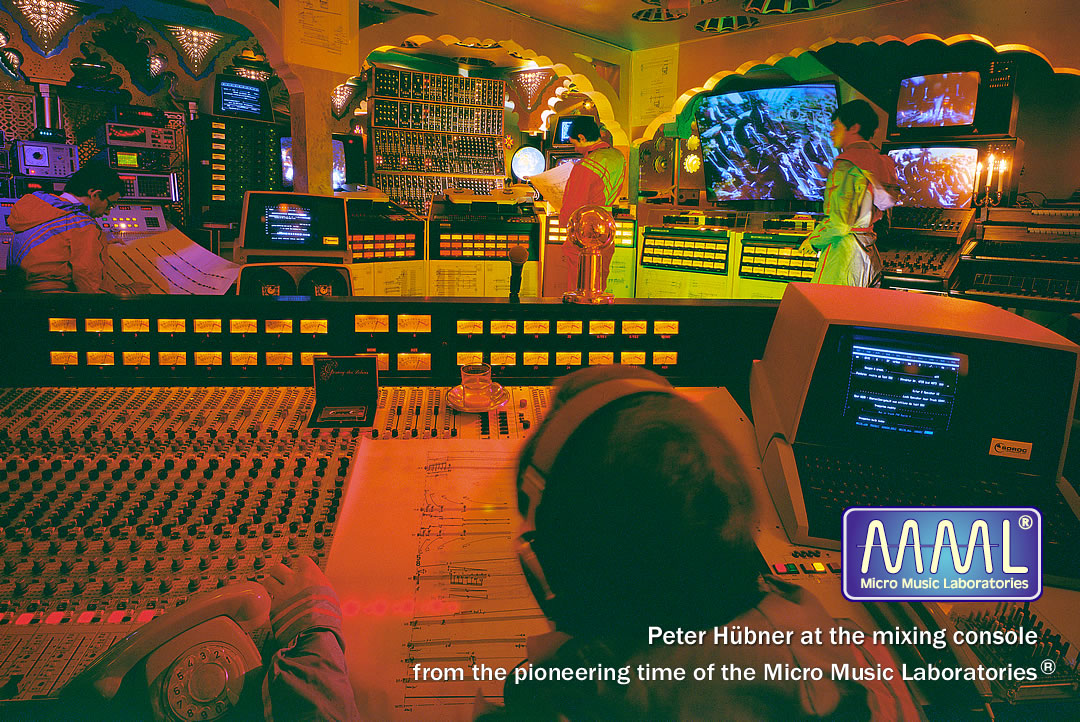
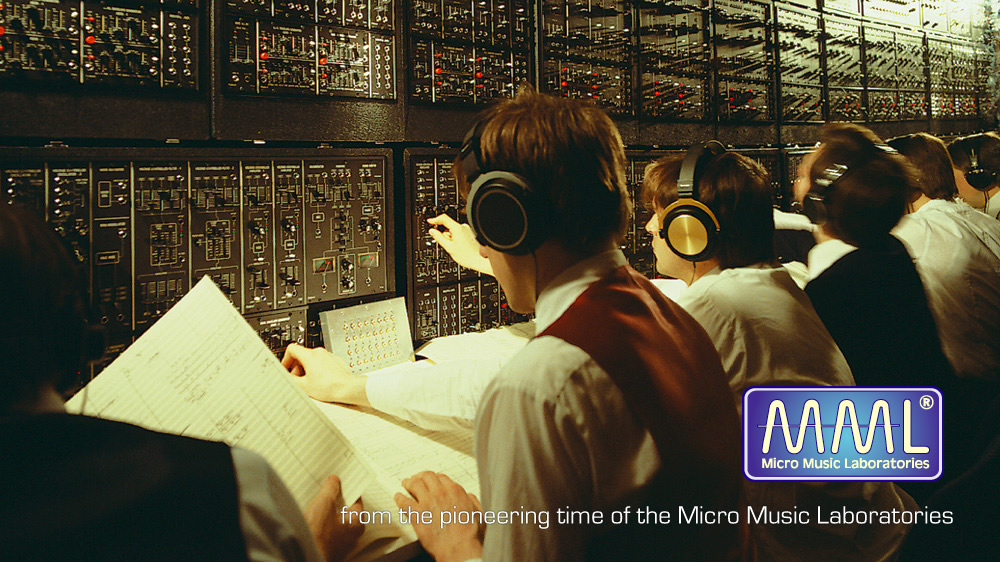
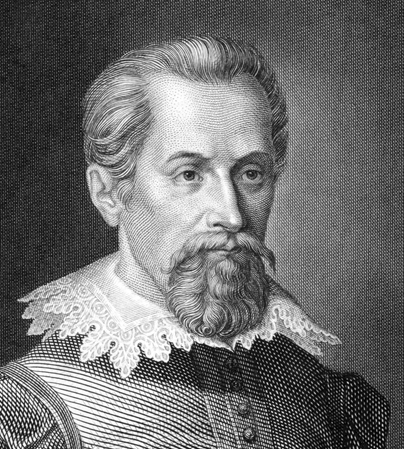 Johannes Kepler
Johannes Kepler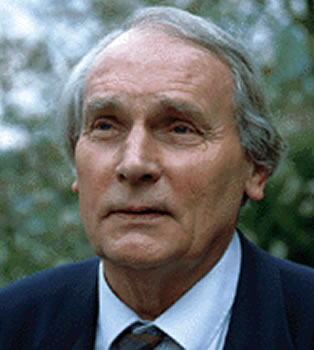 Prof. Dr. med. Gunther Hildebrandt
Prof. Dr. med. Gunther Hildebrandt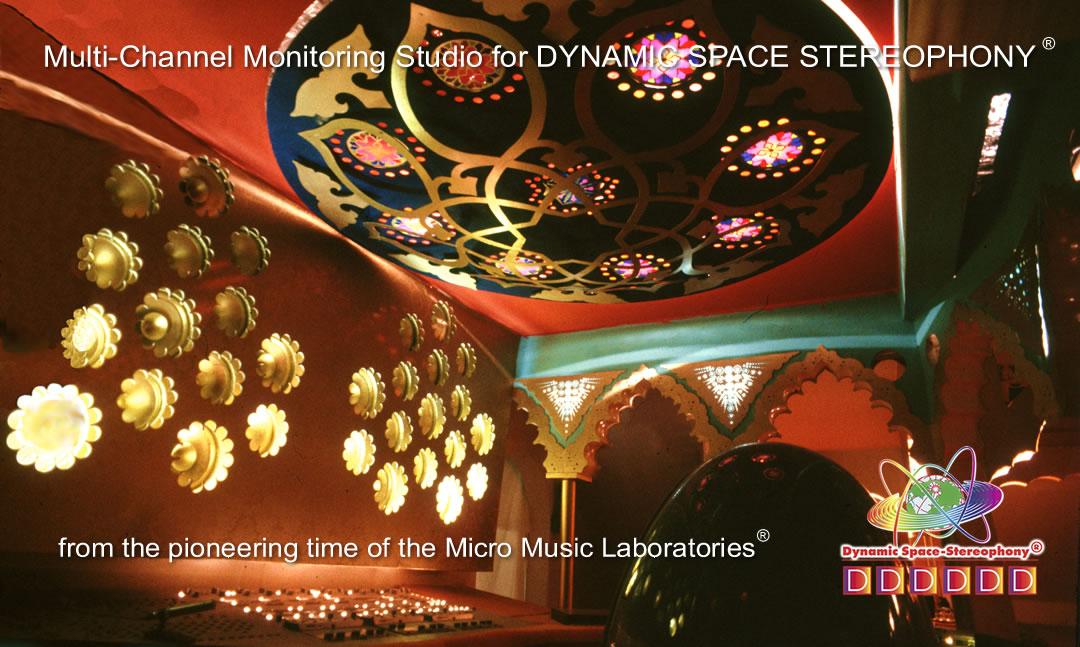
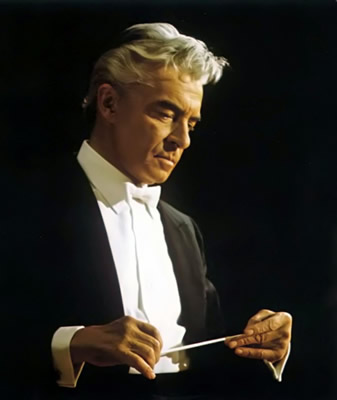 Herbert von Karajan
Herbert von Karajan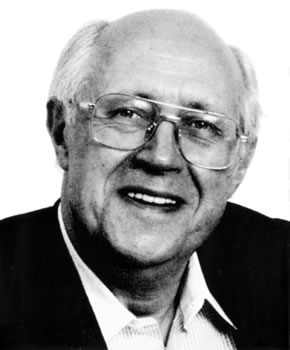 Mstislav Rostropovich
Mstislav Rostropovich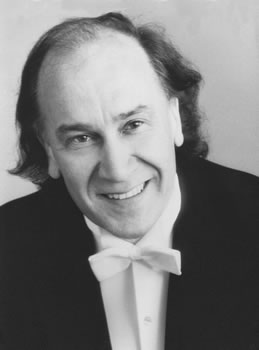 Hans Vonk
Hans Vonk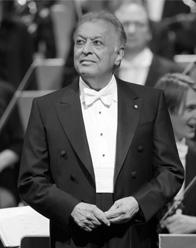 Zubin Mehta
Zubin Mehta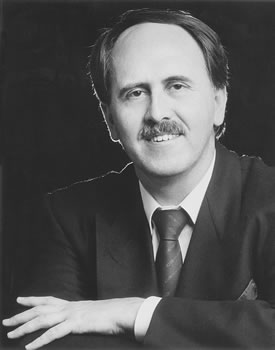 Jesus Lopez Cobos
Jesus Lopez Cobos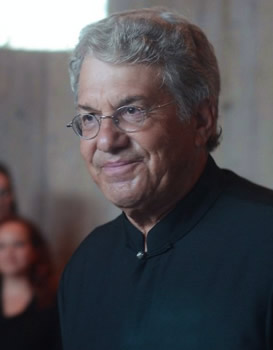 Stanley Sperber
Stanley Sperber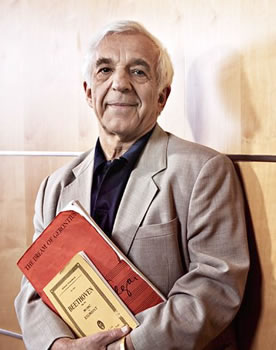 Vladimir Ashkenazy
Vladimir Ashkenazy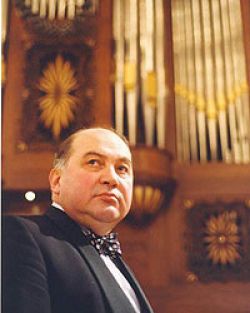 Prof. Rubin Abdullin
Prof. Rubin Abdullin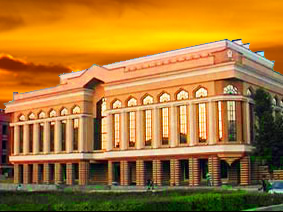
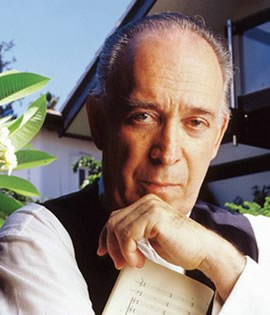 Noam Sheriff
Noam Sheriff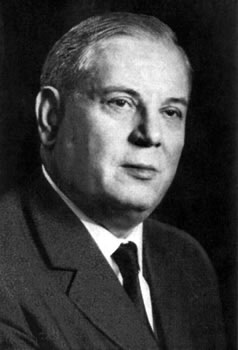 Prof. Dr. Herbert Eimert
Prof. Dr. Herbert Eimert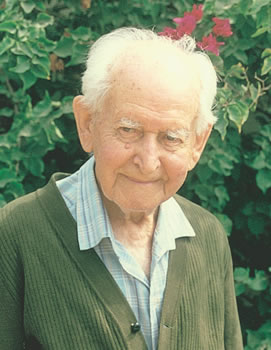 Prof. Dr. Zvi Rothenberg
Prof. Dr. Zvi Rothenberg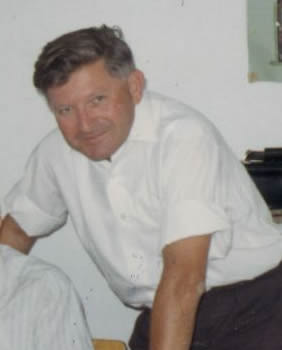 Shalom Ronli-Riklis
Shalom Ronli-Riklis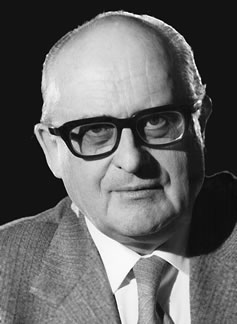 Prof. Dr. Rudolf Haase
Prof. Dr. Rudolf Haase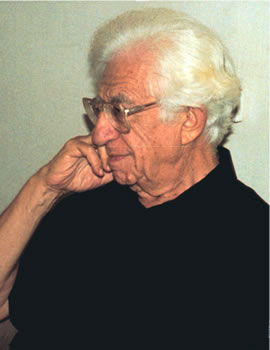 Prof. Dr. Herzl Shmueli
Prof. Dr. Herzl Shmueli